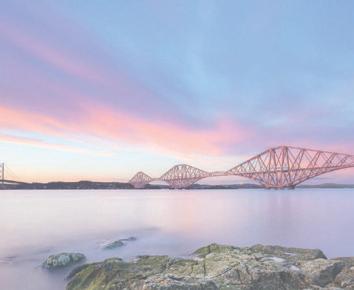LOCAL WALK:
COMMUNITY:
SPOTLIGHT:





When I saw William’s walk feature come in this month, where he is exploring a different section of the Union Canal near Broxburn, I decided to also publish an article about the lesser-know feat of engineering that keeps the canal level – the main feeder canal that runs down from Cobbinshaw reservoir. William starts the walk (p 42) where the feeder meets the main canal; and the history article (p8) explains more about the vital role the feeder plays. The canal is always a good spot to head if you’re looking to ease yourself out for some fresh air this spring.
I’d like to wish all readers a fantastic Easter break! There are a few ideas for activities over the Easter weekend on the What’s On page. If you know of events for charity or community groups over the summer who would like to publicise them locally, feel free to drop me a line as they are included free of charge on the What’s On page.

As ever, thank you for reading Konect and supporting local businesses.





















As you’re enjoying a walk, cycle or boat trip along the Union Canal, you may not be aware that its serene surface level is maintained only by a feat of engineering which keeps it topped up to the tune of an average 2 million gallons of water per day.


The civil engineers who built the Union Canal (which opened in 1822 after five years of construction) knew that it would have to be continually replenished. So in 1818 began one of the most marvellous feats of engineering – the construction of the main feeder for the Union Canal on its original 32 mile stretch. A brilliant Scottish civil engineer from Dumfries, James Bruce Jardine, was appointed to construct and enlarge the then very small Cobbinshaw Loch which lies between Carnwath and West Calder. The loch was the ideal spot, situated in a vast watershed approx 879ft above sea level. The loch would eventually cover a 310 acre site and become the reservoir for the Canal Feeder via the Bog Burn and Murieston Water.

The feeder has been largely underestimated and is taken for granted as the much smaller sister of the mighty Union Canal. The late Ronnie Rusack, former owner of the Bridge Inn at Ratho and recipient of an MBE in recognition of his role in the rebirth of the Union Canal, recalled arriving at work one morning at the Bridge Inn to find his canal boats were high and dry; it was obvious that the level of the canal had seriously dropped overnight. This was not liable to happen unless something really unusual had occurred. They discovered that the bank had fallen into the feeder, blocking it on the stretch above Almondell Country Park
before it runs into the Lin’s Mill Aqueduct and preventing it from flowing into the canal. When the bank was repaired and the feeder cleared, the canal was duly replenished and they were back in business again. (Bridge 15 was recently renamed Rusack’s Bridge in memory of Ronnie’s incredibly contributions to the canal)
In its heyday, the sluices of the feeder were looked after and it was kept free of weeds and silt, as it was essential to the functioning of the canal with its cargoes of coal into Edinburgh from Scotland’s coalfields. Since the canal has been renewed and opened up for leisure, the feeder is once again being maintained, by Scottish Canals.
The famous Scottish engineer Hugh Baird was appointed to oversee the construction of the feeder itself. A large weir was built at Mid Calder, and a smaller weir (known to locals as the Scaler) down river at East Calder where the feeder starts its run-off from the River Almond. The feeder flows along the bottom of the hill under a small stone bridge with a sluice gate then under the railway viaduct, which was built much later in 1885. (The railway viaduct is 23 metres high and has nine segmented arches. It was under threat of being demolished a good few years ago but fortunately after much protest it was saved and is a wonderful walkway through the park with marvellous views
of Almondell). From here the feeder has a short stretch until it reaches the Iron Bridge Aqueduct. This beautiful green cast iron bridge was based on the design of one of Shropshire’s most famous landmarks, the bridge that spans the Ironbridge Gorge. The aqueduct carries the feeder over the Almond at a height of six metres above the river in a cast iron trough 1.8m wide and 1m deep. Before the solid walkway was constructed, the original walkway was constructed of large sections of cast iron mesh bolted together, and when walking across you could see the feeder running underneath. After leaving the aqueduct the feeder runs for a short distance until it reaches a spot near the Nasmyth Bridge on the East Calder side of the river where it disappears into the hillside in a series of tunnels until it reaches its destination – the Union Canal at Lin’s Mill Aqueduct.

This quite magnificent aqueduct was also built by Hugh Baird in collusion with another great Scottish civil engineer, Thomas Telford. It is said that Thomas Telford came to inspect it. Its five magnificent arches carry the canal over the river in a 128 metre long cast iron trough. It is the fifth largest aqueduct in Scotland, stands 23 metres above the River Almond and when the water in the canal gets too high the main sluice gate is opened and the water pours back into the river in a most beautiful cascade. In the heyday of the canal, parties would sail from Edinburgh to the aqueduct where the main sluice would be opened for their entertainment.
The canal and its feeder were built by navvies - mainly Highlanders who had to abandon their crofts during the clearances, and the Irish who were fleeing the hardship of their own country. It was hard, back breaking work. The length of the feeder from the weir at the Scaler to Lin’s Mill Aqueduct is three miles. The river dips by approximately 50 metres over this distance, so the design of the feeder maintains the water at sufficient height to allow it to feed into the canal.
This article was written by Vicky Whyte, who interviewed Ronnie Rusack MBE about the canal a number of years ago. Article originally published in Konect 2015.
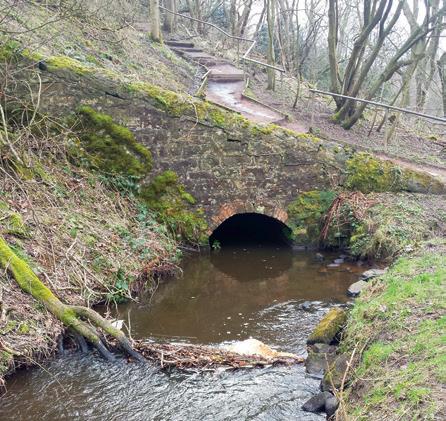
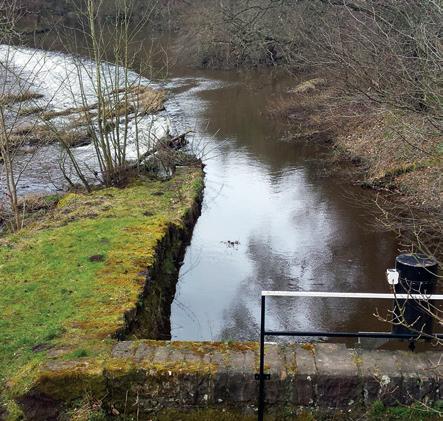
 Iron Bridge Aquaduct
Iron Bridge Aquaduct










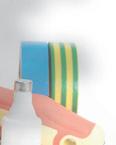

























The clocks have changed and with the longer days there is a far greater incentive to get out on a bike. Cycling is good for us and good for the planet too. To prevent injury, it is important to ensure that your bike is the correct fit for you, so what should you look for?
FRAME SIZE - When you straddle the bicycle frame with your feet flat on the ground you should be able to comfortably clear the crossbar or “top tube” of a gent’s bike. Ladies who want a bike with the traditional “step-through” frame can get a good indication of suitable frame size by trying a gent’s bike first.
Once you have an appropriate frame size, think about the 3 points of contact the human body has with the bike – hands, feet and backside. Our body weight is spread over these relatively small points so correct positioning will improve comfort when cycling.
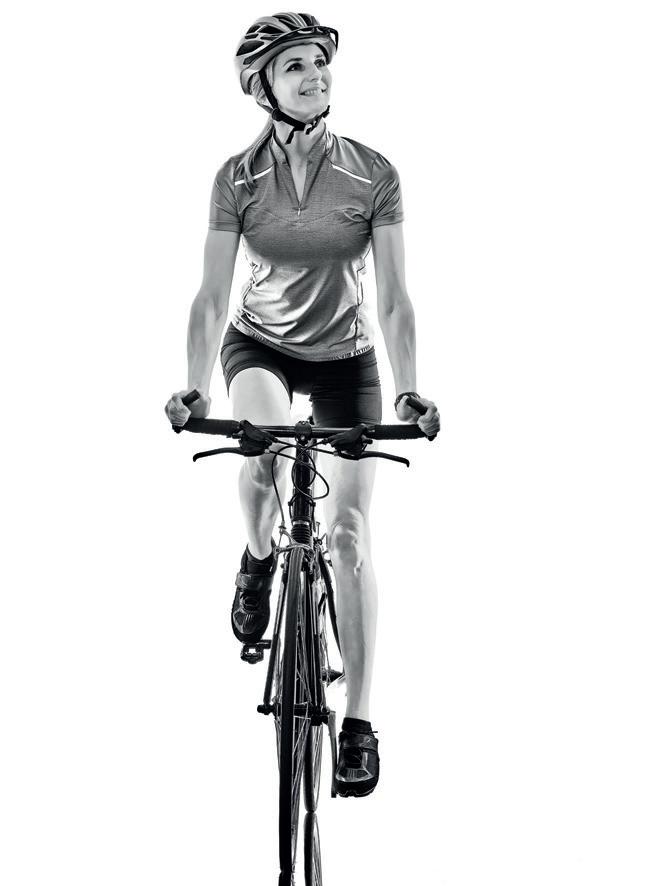
SADDLE HEIGHTYour saddle should be high enough that your knee is almost, but not completely, straight at the bottom of each pedal stroke. Riding with a “soft” knee like this ensures that the knee is not repeatedly overextended with each revolution of the pedals as this would stress the ilio-tibial band, stress the hamstring tendons and increase loading on the patellofemoral joint all resulting in knee pain. Riding with a saddle which is too low will inhibit leg power making
you an inefficient cyclist and will also stress the quadriceps tendon again giving knee pain. Your saddle is too low if you can get both feet flat on the ground while sitting on the saddle.
SADDLE SIZE - Saddles come is 3 standard widths and it is well worth ensuring that you have the best fit for your anatomy as determined by the width of your ischial tuberosities or “sit bones”.
HANDLEBARS - Handlebar height depends on personal preference but remember that lower bars require more body flexibility and promote a more aerodynamic riding style whereas higher bars reduce spinal flexion and therefore reduce neck, back and wrist strain. Handlebars should be the same width as your shoulders. If wider, then arms and chest create a large area for wind resistance to slow down speed of travel but if arms are too close together it becomes harder to breathe properly.
PEDALS - Toe clips keep the ball of the foot over the pedal axle for an efficient cycling technique. The position of the toe clips is important. If rotated towards the bike there will be extra rotation of the shin bone resulting in knee pain, particularly around the knee cap. If the toe clips are rotated away from the bike frame this causes external rotation of the shin giving pain on the inside of the knee.
GET ON YOUR BIKE!
An ill-fitting bike can be the cause of knee, back, neck, shoulder, and wrist pain. Time spent ensuring the anatomy of your bike is a best fit for your own anatomy will help you stay on your bike to get fit, have fun and avoid unnecessary pain. We all want that!
The health column is contributed by McNaughton Physiogrange, Edinburgh www.physiogrange.co.uk



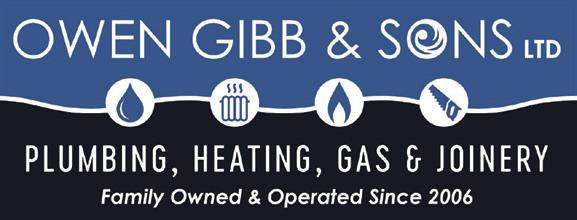

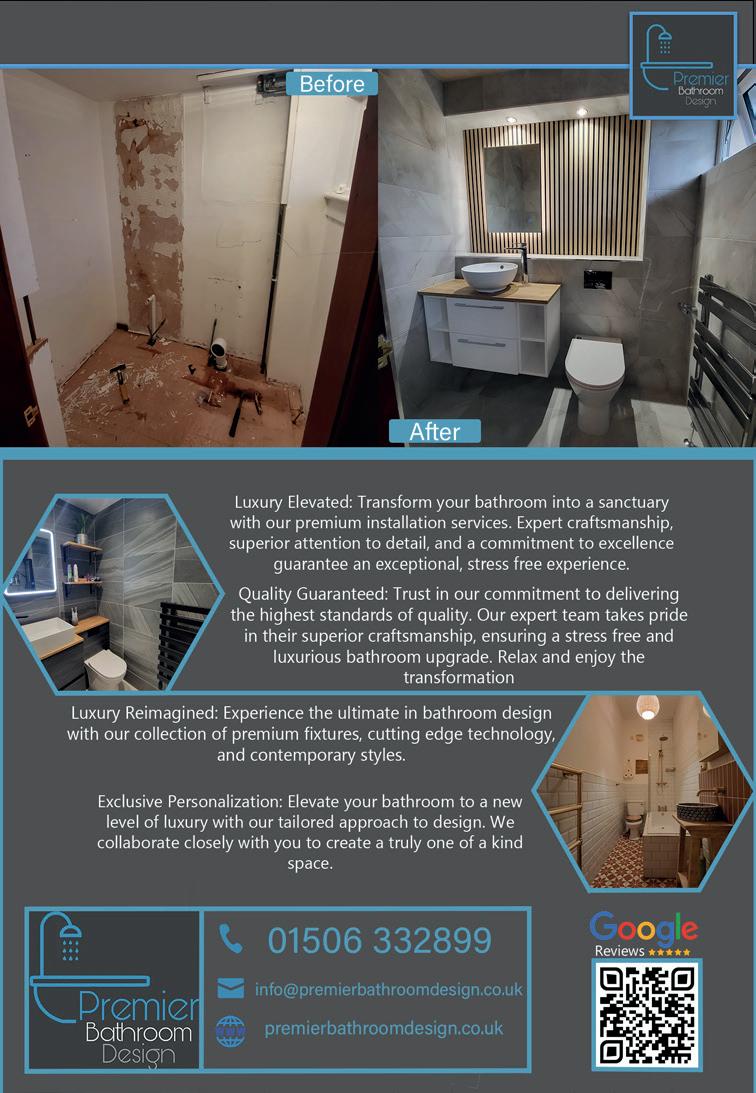
RAISON HOME: THE ART OF DESIGN IN THE HEART OF YOUR HOME

Specialising in kitchen, bedroom and bathroom transformations, Edinburgh local Sarah Maguire started Raison Home Edinburgh after leaving corporate life to follow her love of interior design.

Sarah knows the area well and the unique properties that Edinburgh has to offer. From traditional Old Town properties to contemporary new builds (and everything in between), Raison Home Edinburgh can offer a customised solution for your home and lifestyle.
What makes Raison Home Edinburgh unique is the concept of designing a dream interior with clients in the convenience of their own home. Bringing the showroom directly to you removes much of the stress, and meeting with you at home ensures your new interior works for your home and your needs, not just the showroom. Sarah jointly designs with you, ensuring that space is maximised and it works with all the technical aspects of your interior.
To help you visualise the look and feel of your new home
interior, Sarah designs on 3D software and presents your project in virtual reality. This 360° vision allows you to completely immerse yourself in your design and have confidence in your design choices. Virtual Reality goggles are a crucial design tool to give you confidence in your choices, and always guarantee a few giggles! Beyond just designing though, Sarah will coordinate your project from start to finish and be your single point of contact throughout the entire process. She will supply everything required to create your interior and project manage the whole installation.

Raison Home Edinburgh hand pick manufacturers for the quality of their products and appliances and have access to more than sixty brands. Sarah also collaborates with trusted

craftsmen, carpenters, electricians and plumbers across Edinburgh, to ensure that your project is delivered to an exceptional standard. As your personal Home Designer, Sarah is personally invested in the success of your project. “I know how stressful many people find home renovation projects, and it’s my job to show a more convenient, stressfree alternative. I cherish the variety that each day brings, and there’s no better feeling than a project coming together as planned, and a happy client along the way.”
This article is contributed by Raison Home Edinburgh. For tips and inspiration for your home renovation projects visit our social media
@raisonhomeedinburgh or contact Sarah to arrange a design consultation at sarah. maguire@raisonhome.com

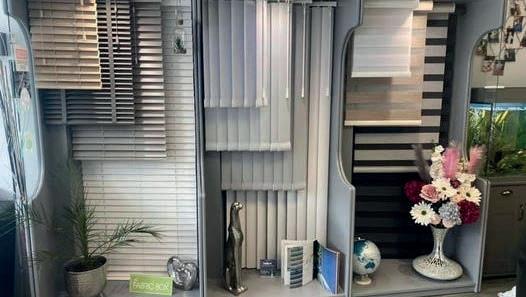

How much of your day has to do with food? Thinking about it, buying it, preparing it, fretting about the fats or carbs in it, savouring it, dealing with leftovers, daydreaming about more food … I realised a long time ago that I was fairly consumed with what I consumed! Some people eat to survive. For others, like me, thoughts of breakfast get us out of bed in the morning!
Wedding food
We’ve just had a family wedding! One of the many considerations surrounding my daughter’s wedding was about food. What would our guests eat? Would we have a wedding breakfast? An evening buffet?.

Discussions with our daughter revealed she was not interested in a formal meal. But she did want an evening buffet at a venue on the Leith quayside. I suggested cake and coffee after the ceremony too, so we could be hospitable to those not invited to the evening do. It was also a way of getting food into the bride, who gets weak when her blood sugar is low.
We thought about quantities for the buffet, and flavours for the cake. But what did we consume in the days before the wedding? We ate what we could, when we could. The night before the big event, at the rehearsal, our only recourse was ordering pizza.
Throughout the past six months or so (my stint as a wedding planner), I have reflected on how many things have changed since my own wedding 36 years ago. And, of course, food is right up there on the list! Gone are the days when a wedding celebration might involve friends and family meeting at the church hall, everyone bringing along their tastiest dish! Even if today’s couples wanted to do that (most don’t!), how would you cater for everyone?
Our buffet had to accommodate vegans,
vegetarians, and those needing gluten-free or lactose-free foods. Several people had a nut allergy, someone was allergic to shellfish and another to beetroot. I’m very glad the venue dealt with all of this. The food was attractive and delicious. However, I wish I hadn’t taken the chunk of “cheddar” from the cheeseboard. I happily bit into it, before discovering it was a cube of butter!
On my wedding day in Chicago, USA, I ate very little. Not much more than a bite of wedding cake. So that evening, when my husband and I were out for an elegant meal we were being treated to, we couldn’t eat much. We barely managed the large plates of salad, let alone the huge steaks! We took them with us to the hotel, putting them in the little fridge in our room. The next morning we had a flight to catch. No time for breakfast, so we grabbed our doggie bag. I offered to drive, since I was used to driving on the right, and headed for the airport. One hand gripped the wheel; the other clutched a massive hunk of cold meat – which my teeth frequently tore bites off. It’s a picture that would horrify my vegetarian daughter.
IFOOD is contributed by Suzanne Green. Suzanne, is a freelance writer/editor. She is married to Andy and they have two adult daughters.



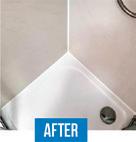






This month I meet Her Royal Highness
The Princess Royal at a charity event at Merchants’ Hall, Hanover Street. Naturally my mind has started to wonder… if I had to choose a wine to present to a Princess, what would I select? Fizz seems a fitting choice. It would be tempting to select a bottle of Nyetimber Classic Cuvee, a nonvintage English sparkling wine produced in West Sussex, England. Used at Royal weddings and celebrations, Nyetimber is a safe, tried and tested option. The Classic Cuvee is a careful blend of Chardonnay, Pinot Noir and Pinot Meunier grapes, the same grapes used across the Channel in Champagne. Nyetimber is available in Waitrose at £38.99 a bottle.
While English sparkling wine is lovely, I would present something less familiar and a little more unusual. I would offer a chilled glass of House of Arras, Blanc de Blanc Tasmanian Sparkling Wine, available from Harvey Nichols. House of Arras is Australia’s most awarded sparkling wine producer. The Blanc de Blanc wording tells us this wine is made from white grapes – 91% Chardonnay and 9% a top-secret grape that the producers have not revealed. The wine is rich but delicate with floral, lemon and baked bread notes.
Unfortunately, my ponderings will not be required. Princess Anne does not drink alcohol while attending events. I may have to have a glass of Tasmanian sparkling wine on her behalf.

The monthly wine tasting column is contributed by Joanne Frette. Joanne lives in Juniper Green with her husband and three children. For wine recommendations, reviews and details of future tasting events, please go to swirlsipsocialise.com
























As April heralds the start of the asparagus season, so bountiful in Scotland, let’s go green (pardon the pun), lessen our carbon footprint and put an Italian twist on this truly delicious native vegetable. The essential ingredients for a good risotto are: Parmesan cheese, butter and a quality stock. The essential equipment required is a heavy bottomed saucepan (some prefer a wok). The process is not complicated at all, just follow these easy steps to enjoy a truly wonderful and mouth-watering dish.
Ingredients:
• 350g risotto rice, (Arborio, Carnaroli, Vialone Nano)
• 250g asparagus spears
• 200g Parmesan cheese, grated (preferably Parmigiano Reggiano), reserve some for the table

• 90g butter
• 1/2 medium onion, peeled and very finely chopped
• 1000-1250ml vegetable stock, homemade or use a good quality stock pot
• Salt to taste
Serves 4
Method:
1. Wash and trim asparagus by gently snapping off the woody part at base of stem. Peel downwards from bottom of tip and cut stem into 1-1.5 cm pieces. Reserve the tips.
2. Put the stock into a saucepan, bring to boil and leave to simmer on a low heat.
3. Put 60g ONLY of butter into another heavy saucepan on a low to medium heat, add onion and cook until golden.
4. Add the asparagus (NOT the tips) and cook for 2-3 minutes, stirring occasionally.
5. Add risotto rice, allow to cook until lightly toasted for a 1-2 minutes.
6. Stir in one ladle of boiling stock and simmer gently until it has been absorbed, stirring constantly.
7. Continue to add remainder of stock a ladleful at a time, stirring constantly over a 15-18 minute period (risotto should be served al dente, with a slight bite).
8. After stirring for 15 minutes, add asparagus tips and cook for a further 3 minutes.

9. Once cooked, add Parmesan, remainder of butter, stir gently, TASTE, add some salt if required, serve immediately and enjoy!
The recipe was contributed by Gina Giubarelli of ‘Bellini Cookery School.’ Gina lives in West Lothian and is passionate about food! She offers classes in basic cooking and a healthy diet. Contact Gina on ginabellini@aol.com





































If any of my neighbours read this, the reason I’m staring out the window so much is I’m on the lookout for this bird. The striking male sparrowhawk. Weighing in at a notso-fearsome 220g, he may not be the biggest bird of prey but he makes up for that in stealth and power.
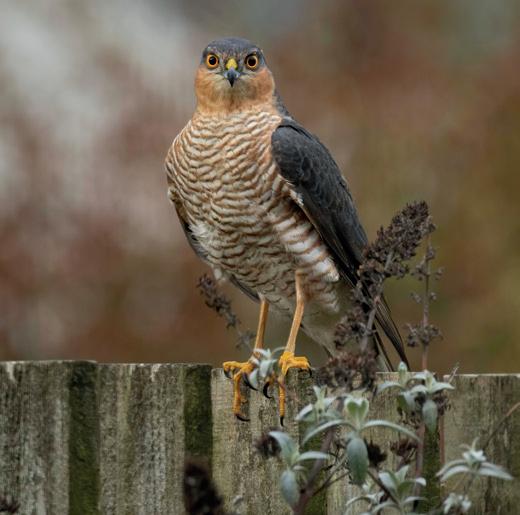
During this year’s big garden bird watch, he appeared on the back fence and I sighed with relief when he disappeared empty clawed. Rather unusually, he came back later that day for a second attempt at the little birds but was far more relentless in his approach. Trying every angle to get them as they hid in the honeysuckle/ clematis before sadly he caught one of the female sparrows.
The power they have in their talons is phenomenal, which I’m sure you can probably tell in this picture. They’re very long in comparison to other birds of prey and it’s to give them extra reach. They are incredibly efficient predators, flying low before rising up to take their prey by surprise. They have feathers which act like the flaps on a plane to help control their speed and steep. Their tails flex from side to side and fan out to help them steer their way through what can be thick
woodland.
When you feed birds in the garden, having a sparrowhawk turn up is a risk but they really are a breathtaking sight when you see them doggedly pursue their prey.
This column is contributed by Clare Harte and Kate Stevenson, who grew up in Edinburgh and now live in West Lothian. Together they run Scottish Sisters Photography and travel around the country to watch and photograph amazing wildlife and scenic landscapes.
Follow them on Facebook: @ScottishSistersPhotography













It’s a chilly and windswept afternoon as we set off. Rain is threatening from the west, our direction of travel, but we press on. We are walking the stretch of the Union Canal between Lin’s Mill and Broxburn, a 2.5-mile section of the waterway.
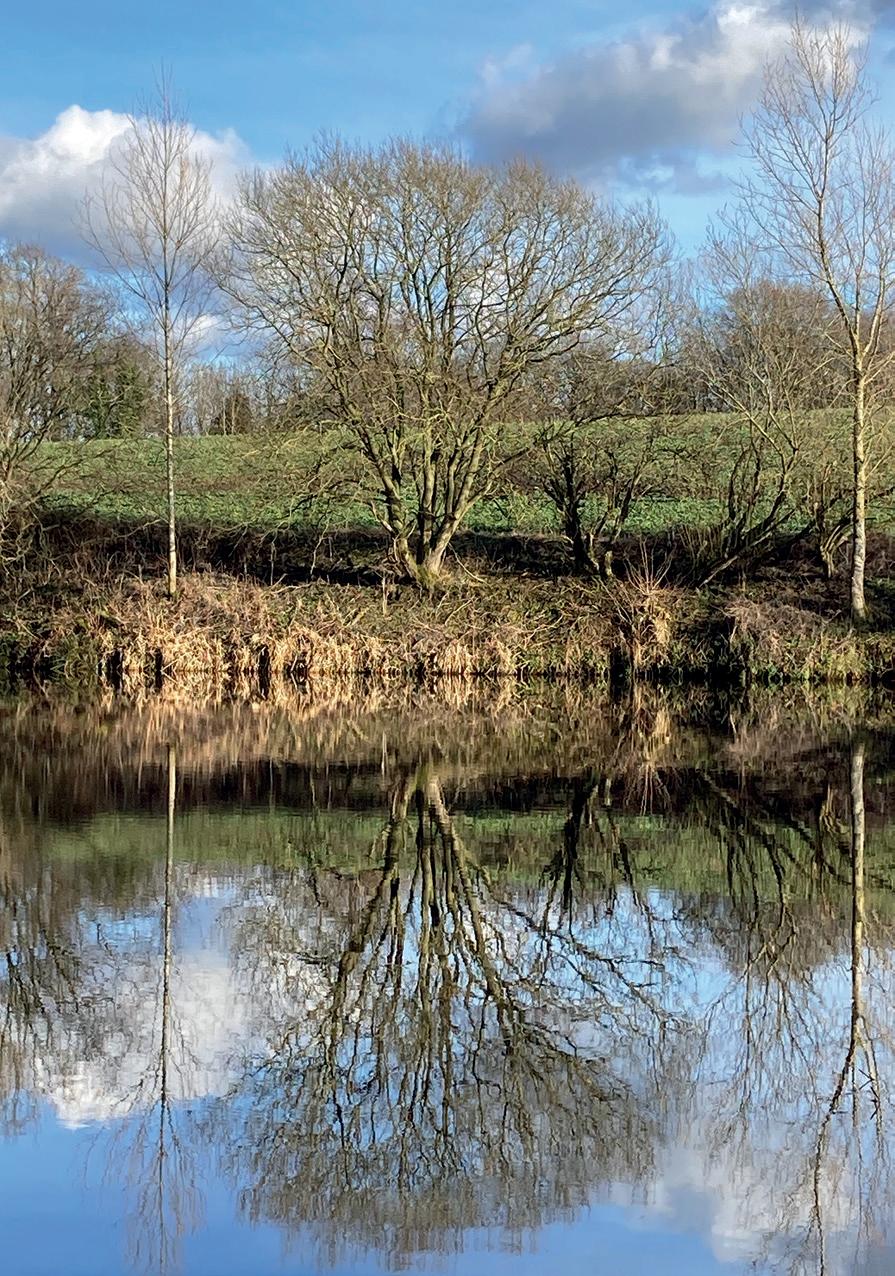
We begin at the Lin’s Mill car park, accessed via the road past Clifton Mains and situated at the confluence with one of the canal feeder channels flowing down from Cobbinshaw Reservoir.

Although this will be an otherwise perfectly level walk (the canal being ingeniously designed to track the 73-metre elevation contour along its length thus avoiding the use of locks), we begin by descending and ascending the many steps as we go down, beneath the Almond Aqueduct, and back up the other side so we can access the walkway on the far bank. This proves ample demonstration of the imposing height of this Victorian engineering triumph. Gathering our breath and looking down from the guard rail at the shallow waters of the River Almond rippling over flat rock strata below, my stomach does a small somersault contemplating the dizzying drop. Incredibly, in the winter of 1895, water from the sluice overflow which controls the height of water
in the canal froze, forming an icicle which stretched all the way down to the frozen river 23 metres below. In another slightly chilling fact from this area’s past, a nearby information board notes that William Lin, who lived at the nearby mill, is said to be the last Scot to die of the plague in 1645.
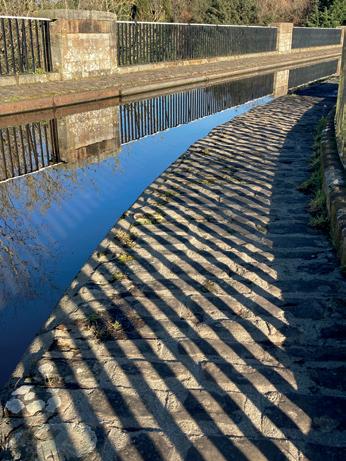
Despite its wintry edge, the air is fragrant too, a mixture perhaps of the gorse (some already in flower), the cut reeds by the water’s edge, and the new crops beginning to sprout in the adjacent fields. There are few trees along this section of the canal and this allows clear views across to Broxburn and Greendykes Bing beyond. As we walk, the white-noise rush of traffic on the M8 builds steadily.
Each of the bridges over the canal are numbered and soon we arrive at 21a, whose side bears the large letters MM – indicating the name by which it is better known, the Millennium Bridge. This bridge carries the M8 over the canal near the point where previously the road’s construction blocked the waterway, the canal having now been diverted 100 metres south to facilitate the new crossing. The bridge took on particular significance at the culmination of the Millennium Link project to reopen the canal when, in May
2000, two boats - one having departed from Linlithgow and one from Ratho - met here bow to bow.
As we continue along the final stretch of our walk, as ever, we keep our eyes peeled for wildlife. However, we draw a blank and, with the wind biting, we conclude that local creatures must have withdrawn to nest or burrow, seeking warmth and shelter. Just as we are contemplating doing much the same, our thoughts turning to steaming mugs of hot chocolate, I glance across the water to see a dark chocolate shape disappear into the water.
Just a tail. Too long to be that of a rat or water vole. Could it be…?
For a minute or two we scour the water’s surface, but to no avail. Then, after we walk another 50 metres or so, there is movement on the opposite bank. There, beneath the shelter of a gorse bush, a small otter is returning our gaze. It eyes us cautiously for a few moments before slipping back into the water with effortless fluidity and vanishing from sight…
Find out more about the Union Canal, its heritage and stories, and get the accompanying app, at unioncanalunlocked.org.uk




